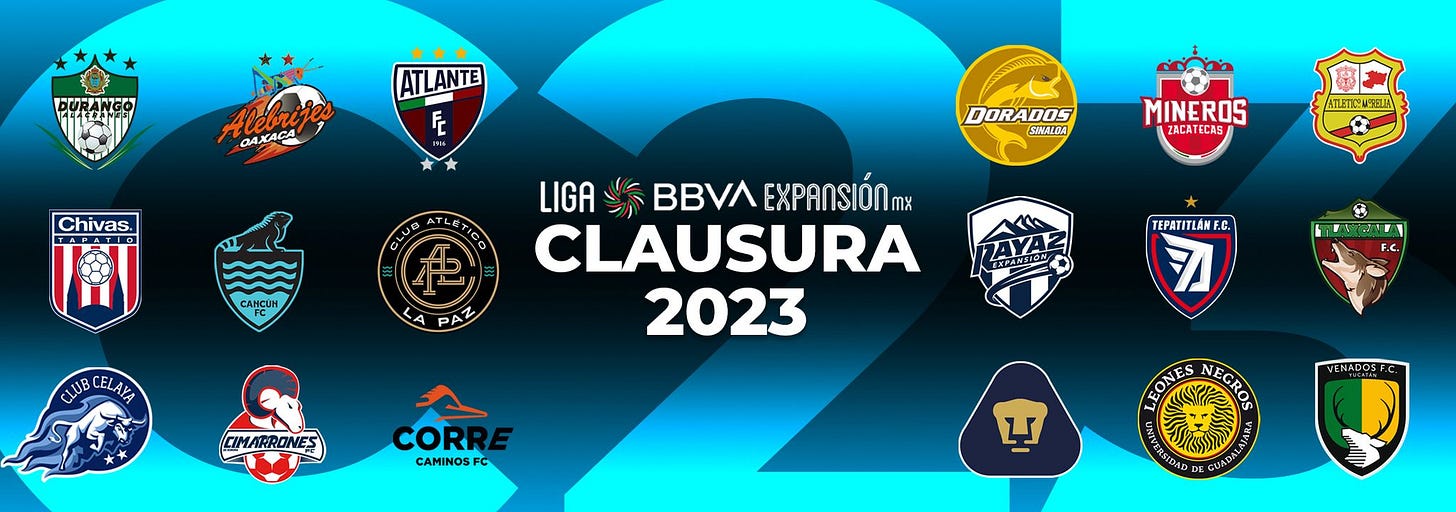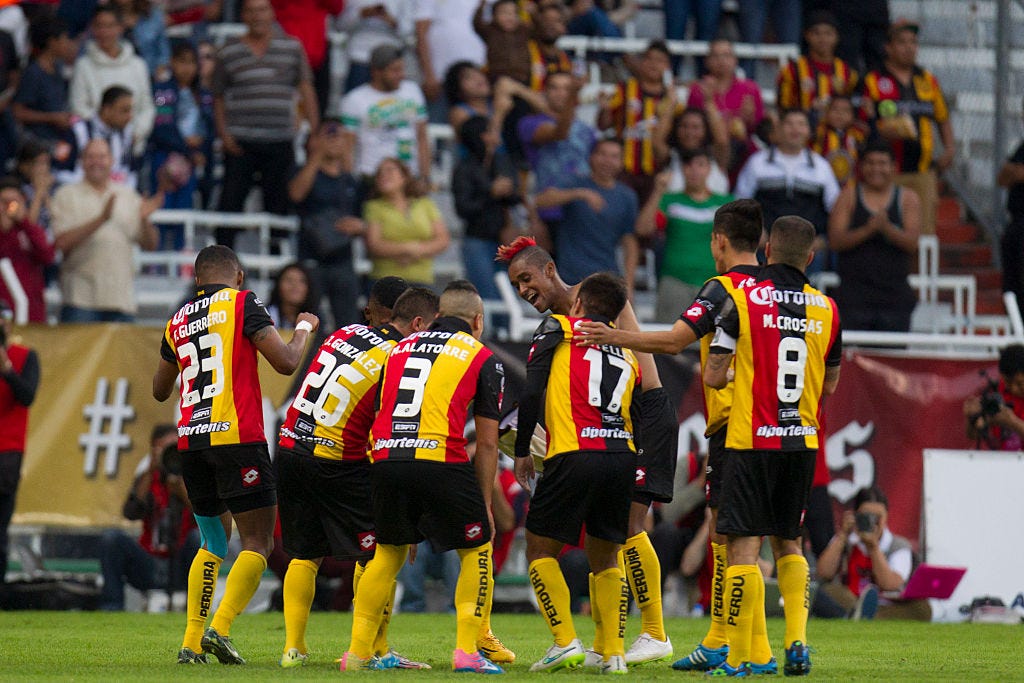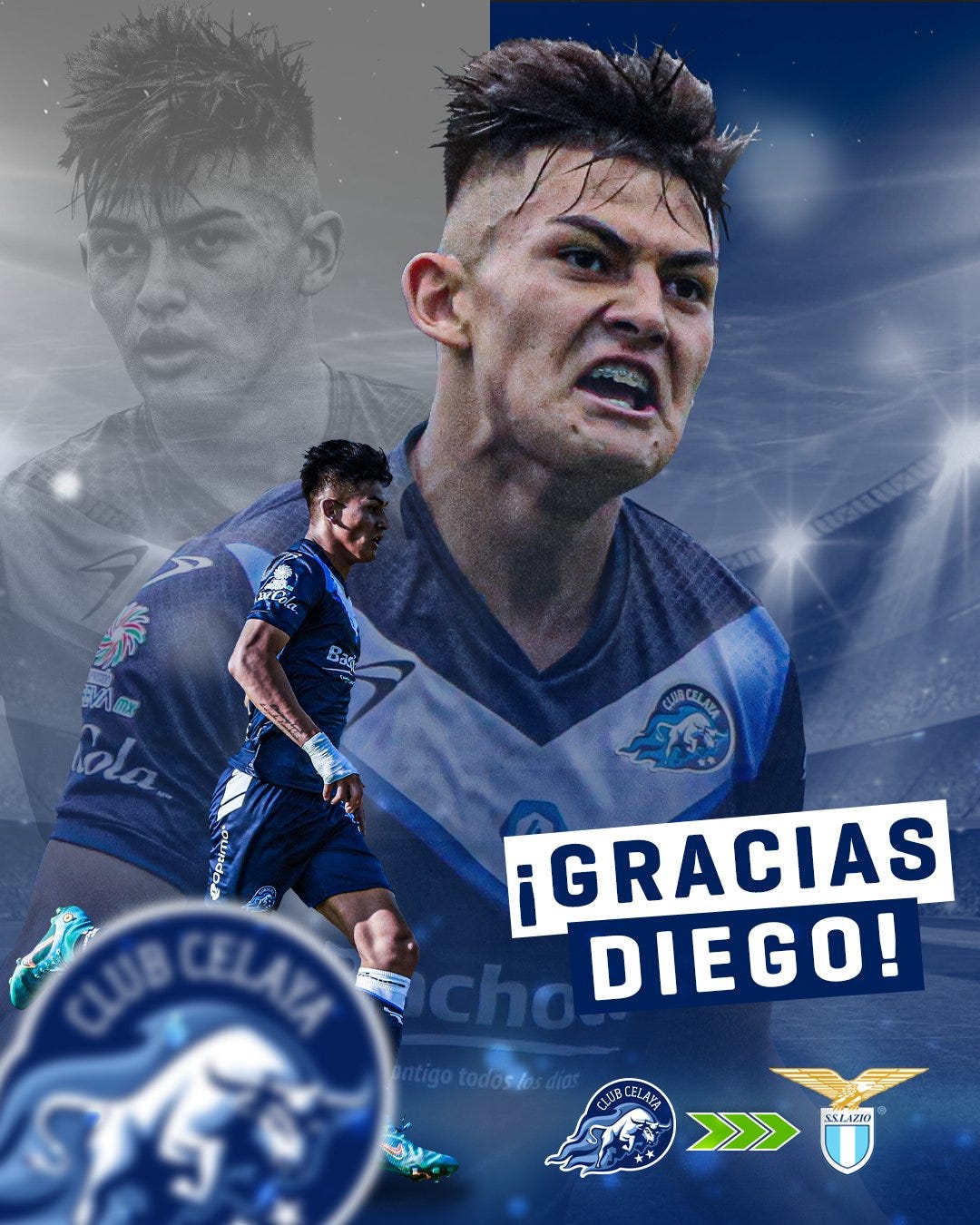🇲🇽 What does Mexico's second division want to be?
And will pro/rel return? I spoke with club presidents about the past, present & future of the Liga Expansion.
A few historically great clubs. Some plucky upstarts with sleek marketing. Reserve teams. Mexico’s second division is a strange mix.
Every few weeks rumors pop up that changes are coming to the Liga Expansion.
Again.
The latest indicates the second tier could be made up of six independent clubs and 18 reserve squads. That’s after significant changes made at the start of the pandemic in 2020, designed to last until the 2026 World Cup.
Mexican soccer authorities can’t decide what they want to do with the second division, and it’s unclear if or when promotion will be a possibility for the clubs currently in the lower league.

But in an ever-changing landscape, most Liga Expansion clubs are doing their best to forge ahead in their chosen lanes.
It’s not just the profile of club that differs in the second division, vision does as well. The reserve teams, obviously, are trying to produce players for the first teams. Others want to dominate the sports landscape in their cities, no matter the level of play. Some are becoming selling clubs, exporting players within Mexico and abroad.
That diversity may be the second division’s biggest strength.
“I think this is actually incredibly positive and is actually the power of the league right now. Everybody has to use what they have.” Cancun FC Vice President Giovanni Solazzi told me. “The projects are all different, but they’re working. We’re showing the league that we’re here.
“There are very interesting projects, very different from each other, many led by young, smart and committed people.”
Whether or not those in charge of Mexican soccer choose to take notice is a different question altogether.
Alberto Castellanos remembers the scenes in 2014-15, the last time the Leones Negros president oversaw a team in the first division.
An average of 36,590 fans turned up at the Estadio Jalisco to watch UDG battle against relegation. The team went down but outdrew fellow Jalisco tenants Atlas in the process, finishing in third in Liga MX when it came to number of people in seats at a Clausura match.
The night I talked with Castellanos earlier this season, the announced attendance at the Jalisco was 2,081 fans. Alonso Hernandez headed in the lone goal of a 1-0 win just before 11 p.m. local time to send just under 4% of the historic stadium’s capacity into celebrations.
UDG is a club with history. It’s a team that has one of the best brands in Mexican soccer. The logo is cool. The jerseys are beautiful. People like Leones Negros. That’s why Castellanos is sure that if his team could get back to the first division, the fans would return.
“We’re in a category where really sponsorship doesn’t exist, the quantity of investment doesn’t exist. You say, ‘If I’m not going to go up, why invest?!’ You’re losing money,” he said. “I think without promotion and relegation, what you’re taking away from fans of all teams in the second division is taking away those fans’ hope.
“Mexico is a soccer country. Every municipality wants a third-division team and if it can go up, man, it’d be a huge party with everyone hoping it can do it again.”
But with Mexico’s ever-changing club soccer landscape, is it even possible for teams to go up?
Will promotion and relegation return to Liga MX? Right now, the answer is: Maybe.
Castellanos’ UDG has achieved ‘certification’, getting Mexican soccer authorities’ stamp of approval that it meets six requirements (including minimum stadium size, sufficient sponsorship revenue or a path to solvency, and fully fledged business plan) to go up should the team win either the Apertura or Clausura and then become Campeon de Campeones.
When three other teams are certified, promotion will ‘reopen’, potentially earlier than the six-year moratorium Liga MX announced as the Covid-19 pandemic was beginning.
“Personally, I don’t think the rule makes a lot of sense,” Solazzi said. “Guadalajara has everything. I don’t understand why they have to wait for three teams to get certified.”
That’s, of course, if promotion and relegation return at all - something that isn’t guaranteed.
One of Mexican soccer’s power brokers, Alejandro Irarragorri, said in February he needs more information about how the system would work before he can decide whether or not to support it. The Santos Laguna and Atlas owner also noted that as Liga MX does more and more international business to the north, where fans may not be as accustomed to teams falling from the first division.
“Unlike other countries, a high percentage of our fans are in the United States,” he said in a news conference. “In this country, the concept of promotion and relegation simply doesn’t exist.
“I like promotion and relegation and think it’s a very good competitive element of soccer. But beyond whether or not I like it, the important thing is how it’s sustained.”
While it’s easy to say promotion should return and give clubs like UDG, Cancun and Atlante a path back to the first division, few would argue the Mexico’s previous promotion and relegation system worked well.
The scheme was set up to protect legacy teams, sending down only the club that had the worst results in the last six short tournaments. Just one team was promoted each year, and the team that went down often was sold and moved to another city or simply dissolved altogether.
Those same fans in cities like Tuxtla Gutiérrez, Veracruz or Morelia who want to support a team in the first division also want a team that keeps existing. And there are fans in those places and more.
Mexico has more than 100 cities with 200,000 people or more, and many are hours away from a professional team. The splashiest effort to start a league apart from the FMF’s system, the Liga de Balompié Mexicano, was doomed by its start date in early 2020.

Rather than consider the U.S. market an impediment to promotion’s return, Castellanos believes the second division and Mexican soccer as a whole should take what its northern neighbor does best while retaining what made fans flock to Liga MX matches in the first place.
“We should emulate MLS in what it’s best at: Improving its product and truly selling the league to fans as an experience, with important teams bringing in well-known players and strengthening its infrastructure,” Castellanos said. “It attracts sponsorship and gets new industries involved, those are things we should emulate.
“But the essential part of the competition, competing to stay in a category, not to go down or to be champion to go up, that has to do with fans’ hope.
“We’re struggling with that.”
Another struggle, and one source of Castellanos’ attendance woes, also may be one of the Liga Expansion’s biggest selling points.
With the second division on the verge of collapse during the pandemic, presidents accepted a deal to rework the structure of the league and ended up with a product neatly packaged for TV, ideal for a time when fans couldn’t go to the stadium.
A centralized TV deal may not seem remarkable to fans of MLS or nearly any other league around the world, but Liga MX teams continue to hold their own rights and negotiate separate TV deals directly with networks in Mexico and the U.S.
“I think it’s been great for us,” Juan Pablo Rojo, the president of Cimarrones de Sonora, told me of the unified deal. “TV is such a big aspect of soccer right now.
“It’s undeniable the TV product is better, broadcasters have taken us a lot more seriously than before, and the whole thing got better because we were able to focus on the sporting side and develop our fan base and infrastructure.”
To be fair, Cimarrones make for pretty good TV.
Rojo and his group are looking not only to become a selling club but to become a selling club’s favorite selling club - that is, to be the team that sells young players to another team that will sell them on - with Cimarrones, of course retaining a percentage of the profits.
They’re open to producing all types of players but are becoming something of a center-back factory. Cesar Montes’ move to Espanyol this winter saw him join Cremonese’s Johan Vásquez and Sporting Lisbon B’s Jesús Alcántar as Sonora products in Europe.
“We're trying to make a very grassroots effort, one that is very identified with the region, with the state, trying to form players,” Rojo said. “We've seen success. We currently have three players who are products of our academy in Europe, and we want to continue to hang our hat on that.
“We also want to compete right now, where we feel we’re contenders for the championship, but that runs alongside our main strategic mission, which is to form players.”
The Sonora club isn’t the only team beginning to see success in the export business. Celaya loaned Paraguayan forward Diego Gonzalez to Lazio in the winter market while other teams are working to send players to Liga MX.
That’s good news for the national team.
Mexico is a long way from emulating the famous 17 England players who had Championship experience before earning fourth at the 2018 World Cup, but a second division regularly sending talent to top teams would be progress. It would be even better if the level was high enough for Liga MX players not ready for the first team but too strong to play in the U-20 league would could thrive.
Maybe it would even lead to some of those fans Castellanos recalls filing into the stadium returning to the Jalisco to see a team fighting for a place in the first division.
Before El Tri or even Liga MX teams can truly reap deeper benefits, though, Mexican soccer’s leaders must first provide a road map that shows how it will help the second division get where it wants it to be.








